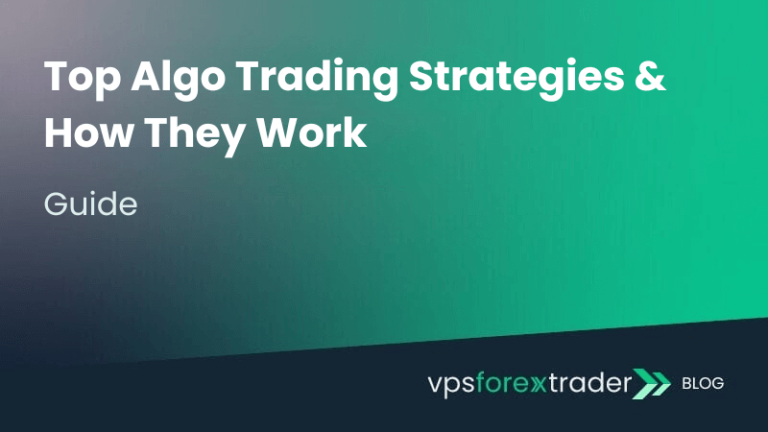Introduction to CFD Trading
CFD is an advanced trading strategy typically used by experienced traders who speculate on the price movement of assets like shares, indices, commodities, cryptos, and forex. It is short for Contract For Difference. It is a form of financial derivative that allows traders to speculate on possible price movements of an asset without actually owning the asset. In this post, we’ll answer questions like what are CFDs, and explain how CFD trading works in Forex, and the benefits and risks of this strategy.
How CFD Forex Trading Works
A Contract for Difference is essentially an agreement between a buyer and a seller that stipulates that the two parties will exchange the difference in the value (price movement) of a financial product for the duration of the Forex CFD contract.
Based on this FX CFD trading agreement, the buyer is required to pay the seller the difference between the value of an asset at contract closing time and its value when the contract was opened. With this kind of financial derivative, traders are simply speculating on the possible price movement of the asset.
In CFD forex trading, the investors do not own the underlying asset. Instead, they bet on whether or not its value will rise or fall. If the trader speculates that the asset price will increase, they’ll buy a CFD and sell at a later date. When the contract closes, the difference between the purchase price and sale price is determined and the net difference is paid out through the investor’s brokerage account.
Similarly, if the trader predicts a decline in the asset’s value, they’ll sell the CFD forex trading position, and then buy it back at a later date. The outcome of the trader’s prediction in either case will determine whether the trade ends in a profit or incurs a loss.

Benefits of Trading Forex CFDs
The following are some of the benefits of CFD trading especially as it applies to Forex and CFD.
Speculate in Both Rising and Falling Markets
As explained above, CFD does not require you to own an underlying asset. Instead, you get to speculate on the price movement of the asset. This means there’s always a potential to profit from both rising and falling prices.
Efficient Use of Capital
Forex CFD trading is leveraged. This means you’ll be getting full market exposure by simply making a small initial deposit. This deposit is known as a margin, and it represents a small percentage of the total value of the position. For instance, if a trader wants to trade a EUR/USD currency pair worth $100,000, they can use a leverage of 1:100. This means they’ll only need to pay a $1,000 margin to open the trade. In this case, the trader’s $1 controls $100 in the market.
Flexible Contract Sizes
Similar to the point above, the contract size of a CFD is typically less than that of the underlying instrument. Since you won’t be purchasing the asset a CFD gives you exposure to the price movement without making a large deposit. The flexible sizing allows you to adjust your trading strategy based on your risk appetite.
Hedging Other Investments
CFDs can serve as insurance against unwanted price movement. Since you can go long or short with CFDs, it’s an effective tool for hedging your existing portfolio, instead of selling it prematurely. For instance, say you have a long-term portfolio that you would like to keep. But you think the value of the portfolio might fall in the future. You could use the CFD to hedge your position. This way, if the portfolio’s value falls as predicted, the profit you’ll make from the CFD covers your loss.
Choosing the Right CFD Broker
There are several excellent CFDs forex brokers out there. However, the CFD industry isn’t highly regulated, which means there are several unreliable brokers as well. Before opening an account with a CFD broker, you should investigate the broker’s background as much as possible. Some of the factors to consider in choosing a forex CFD trading broker include:
- The broker’s reputation
- Longevity
- Financial position.
Effective Strategies for CFD Forex Trading
Although trading CFDs comes with some risks, some strategies can give you a significant advantage and reduce your risk if you follow them. Some of these CFD trading strategies are highlighted below:
- Improve your knowledge of CFD trading: before you start trading forex CFDs, develop your knowledge of this trading strategy and understand how it works.
- Build and follow a trading plan: A trading plan will help determine, how, when and how you’ll trade. It is influenced by factors like your motivations, risk appetite, capital and other factors. Come up with a plan that best suits your position and stick with it.
- Set stops and limits: one of the effective ways to manage risks in FX CFD trading is to set exit levels for your trade. This helps to protect your capital by exiting the trade when the price isn’t favorable. You can either set a stop loss order or a limit close order.
- Start small: one of the benefits of CFD trading is that a small capital gives you huge market exposure. Leverage this as much as possible by starting small and diversifying over time.
- Monitor your open positions: Even if you have protective orders in place, you should still monitor the trade closely and exit manually to minimize loss.
- Have enough to cover the maintenance margin: this is needed to keep your position open. The broker will likely close your position if you don’t have enough in your account to cover the margin call.
Common CFD Trading Mistakes & How to Avoid Them
CFD trading offers flexibility, leverage, and access to global markets – but it also carries significant risks. Studies show that over 80% of retail CFD traders lose money, and most losses stem from a handful of avoidable mistakes.
By understanding these common traps and following structured strategies, traders can dramatically improve their chances of success.
1. Overusing Leverage
The Mistake:
CFDs allow trading with leverage – meaning you can open positions far larger than your initial deposit. However, excessive leverage amplifies losses as much as gains.
- Example: With 30:1 leverage, a 3.3% market move against you can wipe out your entire margin.
- Many beginners open positions that are too large for their account size, leaving no room for price fluctuations.
How to Avoid It:
- Start small: Use low leverage until you build experience.
- Risk no more than 1–2% of your account per trade.
- Understand your broker’s margin requirements before entering a position.
2. Trading Without a Plan
The Mistake:
Jumping into trades based on gut feeling or social media tips leads to inconsistent results. Without a structured plan, traders often:
- Enter positions too late or too early.
- Exit too soon or hold losses too long.
- Fail to manage risk effectively.
How to Avoid It:
- Define a clear trading plan that includes:
- Entry and exit rules.
- Position sizing guidelines.
- Risk/reward ratios.
- Backtest your strategy using historical data before applying it live.
- Stick to your plan and avoid impulsive decisions.
3. Ignoring Stop-Losses and Take-Profits
The Mistake:
New traders often skip stop-loss orders hoping the market will “come back.” Similarly, failing to set take-profit targets leads to missing gains or exiting too late.
How to Avoid It:
- Always set a stop-loss before entering a position.
- Use take-profit orders to secure gains at predefined levels.
- Follow the 2:1 rule: Risk $1 only if you can realistically make $2.
4. Overtrading & Revenge Trading
The Mistake:
Many beginners fall into the trap of:
- Opening too many positions at once, stretching their margin thin.
- “Chasing losses” after a losing trade – known as revenge trading.
- Letting emotions, not logic, dictate trades.
How to Avoid It:
- Limit yourself to a small number of high-quality trades per day or week.
- Set daily loss limits to protect your capital and avoid emotional decisions.
- Take breaks after significant wins or losses – trading while emotional leads to costly mistakes.
5. Misunderstanding CFD Costs & Fees
The Mistake:
CFDs seem straightforward, but many traders overlook hidden costs, such as:
- Spreads – the difference between buy and sell prices.
- Overnight financing fees (swaps).
- Commission charges on certain markets.
These costs add up quickly, especially for frequent traders.
How to Avoid It:
- Choose a reputable broker with transparent pricing.
- Understand all trading costs before entering a position.
- Avoid keeping highly leveraged positions open overnight unless your strategy requires it.
6. Ignoring Market Context
The Mistake:
Focusing only on price patterns without considering broader market conditions leads to poor decisions. Volatile events – such as central bank announcements or earnings reports – can cause sudden spikes that wipe out trades.
How to Avoid It:
- Check the economic calendar before placing trades.
- Avoid entering large positions ahead of high-impact news events.
- Use volatility indicators and smaller position sizes in unpredictable conditions.
Quick CFD Risk Management Checklist
Before placing any CFD trade, ask yourself:
| Question | Why It Matters | Action to Take |
|---|---|---|
| Am I using reasonable leverage? | Prevents margin calls | Keep leverage 10:1 or lower if new |
| Do I have a stop-loss in place? | Protects against big losses | Always set predefined exits |
| Is my risk per trade ≤ 2%? | Preserves account balance | Position size = Account × 0.02 |
| Have I checked fees & spreads? | Avoids unexpected costs | Understand charges before entry |
| Is there news or high volatility? | Reduces surprises | Check the economic calendar |
| Do I have a clear exit plan? | Locks in profits | Define TP levels upfront |
CFD Regulation & Jurisdictional Restrictions
Contracts for Difference (CFDs) are a popular way to trade global markets, but they are not regulated the same way worldwide. In some regions, CFDs are widely available, while in others they’re heavily restricted or even completely banned.
Understanding your local regulatory environment is crucial before you start trading – it affects leverage limits, legal access, and broker protections.
1. Where CFD Trading Is Allowed
CFDs are widely accessible in many countries where brokers are regulated under financial authorities that set trading rules and client protections.
Key Regions Allowing CFD Trading
- European Union & UK(ESMA / FCA-regulated)
- CFDs are legal, but retail leverage is capped at 30:1 for forex majors.
- Negative balance protection is mandatory – you can’t lose more than your deposit.
- Australia(ASIC-regulated)
- CFDs are allowed, but leverage for retail traders is capped at 30:1 (since 2021 reforms).
- South Africa(FSCA-regulated)
- CFDs are legal and widely traded, with fewer restrictions than Europe.
- Singapore, Japan, and Hong Kong(SFC / FSA-regulated)
- CFDs are available but tightly regulated, often with stricter leverage rules.
- Most of Asia-Pacific(varies by country)
- In countries like Thailand, Malaysia, and Indonesia, CFDs are offered but only via offshore brokers in many cases.
2. Where CFD Trading Is Restricted or Banned
Some countries either heavily restrict CFDs or ban them entirely, mostly due to investor protection concerns around leverage and risk.
| Region | Status | Details |
|---|---|---|
| United States | Banned | CFDs are not permitted for retail traders under CFTC and SEC rules. U.S. traders can only access regulated futures & options. |
| Canada | Effectively Banned | Some provinces allow them under strict rules, but overall access is highly limited. |
| Belgium | Banned | Complete retail CFD ban since 2016. |
| Hong Kong | Restricted | Only professional investors with significant capital can trade CFDs legally. |
| India | Restricted | Retail CFD trading is prohibited onshore, but some traders use offshore brokers (not legally protected). |
3. Why Regulation Matters for Traders
Choosing a broker in a well-regulated jurisdiction provides important protections:
| Trader Protection | Why It Matters |
|---|---|
| Leverage Caps | Prevents overexposure and large losses for retail traders. |
| Negative Balance Protection | Ensures you can’t lose more than your deposit. |
| Segregated Client Funds | Keeps your money separate from the broker’s operational funds. |
| Dispute Resolution | Regulated brokers must comply with financial authority complaint mechanisms. |
| Transparency on Fees | Prevents hidden spreads, commissions, or financing charges. |
Example:
An FCA-regulated UK broker must provide negative balance protection and strict reporting transparency, while an unregulated offshore broker may not – leaving traders fully exposed.
Leverage Limits by Region (Quick Reference)
| Region | Retail Leverage Cap | Regulator |
|---|---|---|
| EU / UK | 30:1 | ESMA / FCA |
| Australia | 30:1 | ASIC |
| Japan | 25:1 | FSA |
| South Africa | ~100:1+ | FSCA |
| Offshore Brokers | Up to 500:1 | Varies / Unregulated |
Warning:
Unregulated brokers often advertise leverage up to 500:1 or even 1000:1 – but this comes with extreme risk. Higher leverage magnifies both profits and losses.
5. How to Check If a CFD Broker Is Regulated
Before opening an account:
- Verify their license – Check the regulator’s website (e.g., FCA, ASIC, CySEC).
- Read broker disclosures – Look for client fund segregation and risk statements.
- Beware of offshore-only brokers – They may operate without protections like negative balance guarantees.
Trusted Regulatory Authorities to Check:
- FCA (UK) → register.fca.org.uk
- ASIC (Australia) → asic.gov.au
- CySEC (EU) → cysec.gov.cy
- FSCA (South Africa) → fsca.co.za
Step-by-Step CFD Trade Walkthrough
CFD trading can seem complex until you see a practical example. Below is a simple walkthrough of how a CFD trade works, from choosing an instrument to calculating potential profits and losses.
1. Choose Your Instrument
Let’s say you want to trade EUR/USD, one of the most popular forex pairs offered by CFD brokers.
- Current price: 1.1000
- You believe the price will rise, so you decide to open a buy (long) CFD position.
2. Define Trade Size and Leverage
- Trade size: 1 lot (100,000 units of EUR/USD)
- Leverage offered by your broker: 30:1
- With 30:1 leverage, you only need to provide a fraction of the trade’s total value as margin.
Margin calculation:
Trade size ÷ leverage = required margin
$100,000 ÷ 30 = $3,333.33
So, you need just $3,333 in your account to control a $100,000 position.
3. Set Entry, Stop-Loss, and Take-Profit Levels
Before opening the trade, you define risk and reward:
- Entry price: 1.1000
- Stop-loss: 1.0950 (50 pips below entry)
- Take-profit: 1.1100 (100 pips above entry)
This gives you a 1:2 risk-to-reward ratio – risking 50 pips to potentially earn 100.
4. Open the Trade
You place your buy order for 1 lot at 1.1000. Since CFDs mirror the underlying market, your profit or loss will depend on how many pips the price moves relative to your entry.
5. Calculate Profit or Loss
Each pip in a standard lot of EUR/USD is worth $10.
Scenario A – Trade Hits Take-Profit:
- Price reaches 1.1100, up 100 pips.
- Profit = $10 × 100 = $1,000.
- Your account grows by $1,000 while your initial margin of $3,333 remains intact.
Scenario B – Trade Hits Stop-Loss:
- Price falls to 1.0950, down 50 pips.
- Loss = $10 × 50 = $500.
- Your account decreases by $500, but thanks to the stop-loss, the damage is controlled.
6. Understand the Role of Leverage
Leverage amplifies both profits and losses. In this example, a $1,000 gain on a $3,333 margin equals a +30% return. But a larger move against you without a stop-loss could quickly wipe out your balance. Always choose leverage carefully and manage risk.
7. Closing the Trade
You can close a CFD trade at any time before the stop-loss or take-profit is hit. The difference between your entry price and exit price determines your realized profit or loss.
Quick Recap of the Example
| Step | Detail | Example Outcome |
|---|---|---|
| Instrument | EUR/USD | 1.1000 entry price |
| Position Size | 1 lot | 100,000 units |
| Leverage | 30:1 | Margin = $3,333 |
| Risk Setup | Stop-loss = 1.0950 | Risking $500 |
| Reward Setup | Take-profit = 1.1100 | Targeting $1,000 |
| Pip Value | $10 per pip | Based on 1 lot size |
Common CFD FAQ
What does CFD stand for in trading?
In trading, CFD stands for Contract for Difference.
What is CFD trading?
CFD is an agreement between a trader and a broker in which the trader bets on the potential price movement of an asset. At the end of the trading period, the investor and broker exchange the difference between the opening and closing price of the asset.
How does CFD Forex trading work?
In CFD trading, traders speculate on the future price of an asset, without actually owning it. Typically, the investor makes two trades. The first trade opens the position and is later closed out via a reverse trade with the CFD provider. For instance, if the first trade is a buy, the second trade which is a sell closes the open position. The price difference between the opening and closing positions represents the trader’s profit (or loss) as the case may be.
What are the benefits of trading Forex CFDs?
The main benefit of trading currency CFDs is that you get to speculate in both rising and falling markets. Since you don’t actually own the underlying asset, there’s a chance of earning a profit even if the market is falling. Additionally, CFD is a leveraged product. This gives players more exposure even with a small initial investment.
What risks are associated with CFD trading in Forex?
The fast-paced nature of CFD trading means the market has to be closely monitored. Traders can incur significant losses very quickly if they do not react fast enough to changes in market conditions, host your platforms on a reliable Forex VPS for 24/7 monitoring.
How do I choose a reliable CFD broker?
To choose a reliable broker for trading CFDs, consider factors like the broker’s reputation, longevity, financial position, and trading costs.
What strategies are effective for CFD Forex trading?
Some of the strategies that work for CFD trading include day trading, swing trading, position trading, and Hedging.




